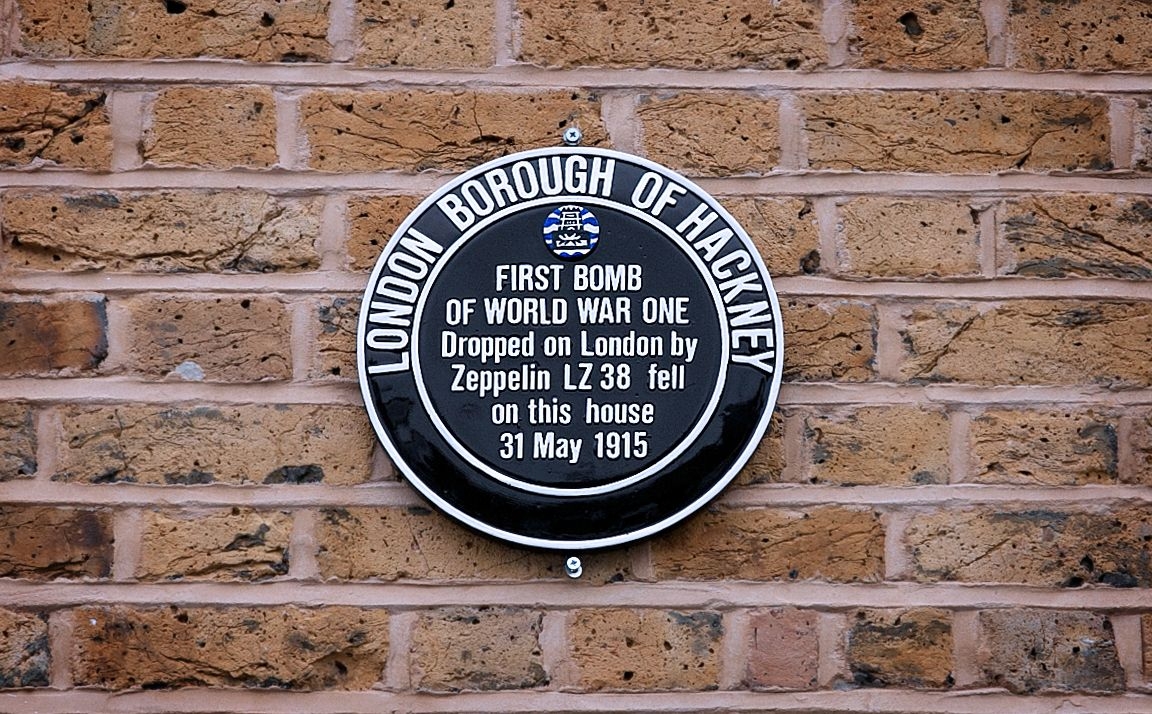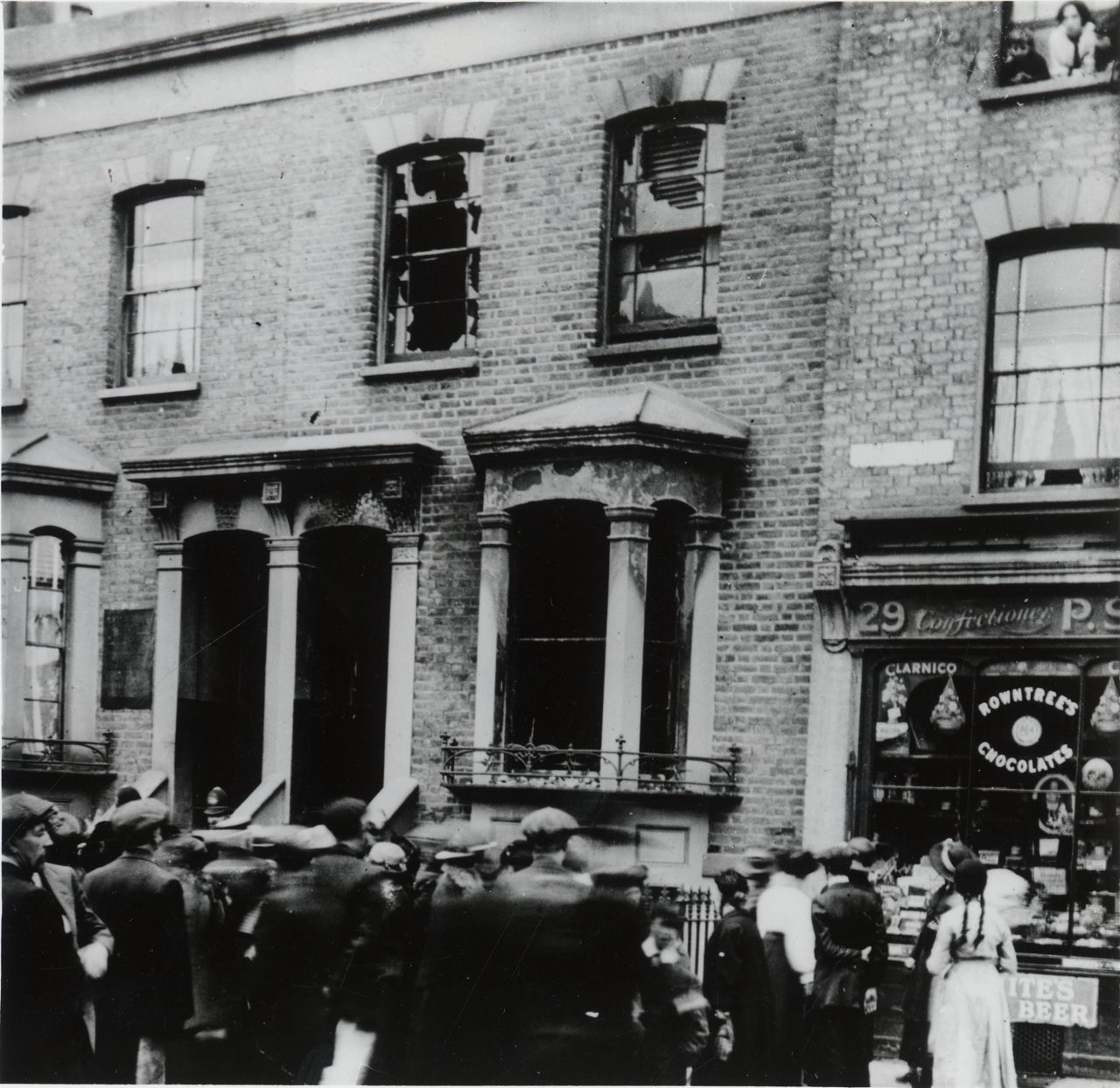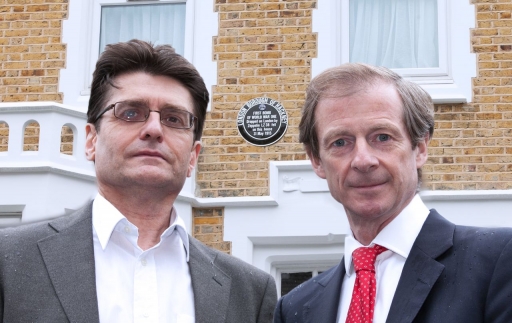The first air raid on London during the Great War has been remembered with the unveiling of a new plaque on a house bombed by a Zeppelin 100 years ago.
16 Alkham Road took a direct hit on the night of May 31st 1915, starting a fire on the top floor of a family home.
The raid, starting shortly before 11pm, caught people unawares.
High-explosive bombs and incendiaries also fell on surrounding streets in the Stoke Newington area as the German airship continued its attack on densely populated areas of north and east London.
A local newspaper later reported that one of the devices was dug up from behind a pub and removed under the personal direction of Britain’s War Minister, Field Marshal Lord Kitchener.
Official figures of the time record that seven people were killed, and 35 others were injured.
The family at 16 Alkham Road escaped unhurt.
Historian Ian Castle says the house “deserves recognition for its unique place in history.”

The plaque installed by the London Borough of Hackney is a reminder of the night London found itself on the front line for the first time.
Ian Castle, who’s extensively researched the raid, unveiled the memorial with Guy Nicholson, Hackney Council’s Cabinet Member for Regeneration, at a ceremony on May 29th 2015.
Councillor Nicholson said: “The Great War acted as the catalyst for great social change to take place but the warfare that brought about this change was as terrible as it was bloody.
“One aspect of this was in the concept of taking a war into the heart of a civilian community many hundreds of miles from the battlefield.
“It must have been as frightening as it was shocking for the community in Hackney and indeed across London, to experience for the first time an attack from the sky.
“It is right that in the centenary of the Great War we recognise those profound moments that so shaped the world we now live in, and recognise the courage that those on the home front in Hackney must have had to draw upon as they faced this new and terrible aspect of warfare that was literally on their doorsteps.”

27 Nevill Road: another of the Stoke Newington houses damaged in the May 1915 Zeppelin raid (Photo: Hackney Archives/London Borough of Hackney)
The new plaque has been unveiled in its correct place. A similar memorial was put up in the area during the 1990s where it was thought the first bomb fell before recent research by Ian Castle came to light.
Mr Castle said: “I am delighted by the unveiling of this plaque, which not only commemorates an important moment in the history of the borough of Hackney, but also a significant point in the history of London too.
“While most people are aware of the Blitz of 1940-41, many are unaware that London was bombed from the air in the First World War too.
“When I first approached Hackney Council, just over a year ago, about placing a new plaque to mark the centenary of the first London air raid, the idea received immediate support and my research as to the point where the first bomb fell was welcomed.
“I am therefore thrilled to finally see this plaque erected on a house that deserves recognition for its unique place in history.”
More than 20 air raids on London followed in the years between 1915 and 1918. The Germans used aeroplanes later in the war. Six of the attacks affected Hackney.
Hackney 2016 programme
Hackney Museum and Hackney Archives will be launching a number of exhibitions in 2016 as part of the borough’s First World War Centenary programme
A collection of over 100 recruitment posters displayed nationally and locally at the start of the war will form the core of a home front exhibition at Hackney Museum from February to June 2016.
Another exhibition at Hackney Archives, continuing the theme of recruitment and conscription, will look at the stories of Hackney’s conscientious objectors.
Local volunteers are also being supported by Hackney Archives to help uncover more of the borough’s First World War history through researching historic collections.
Information & images supplied by the London Borough of Hackney
Posted by: Peter Alhadeff, Centenary News
